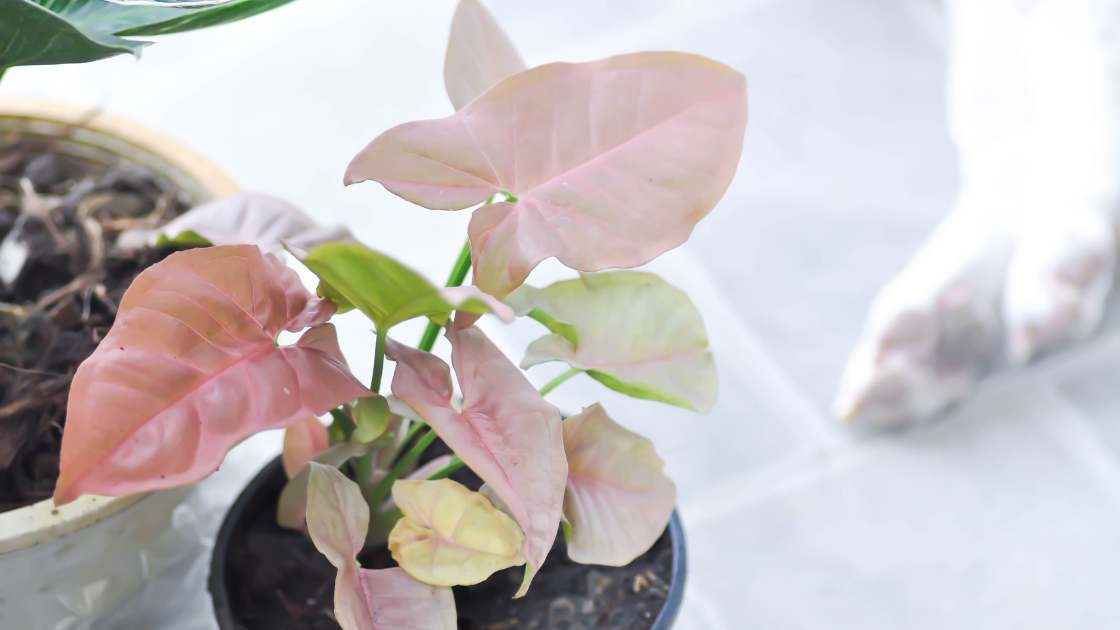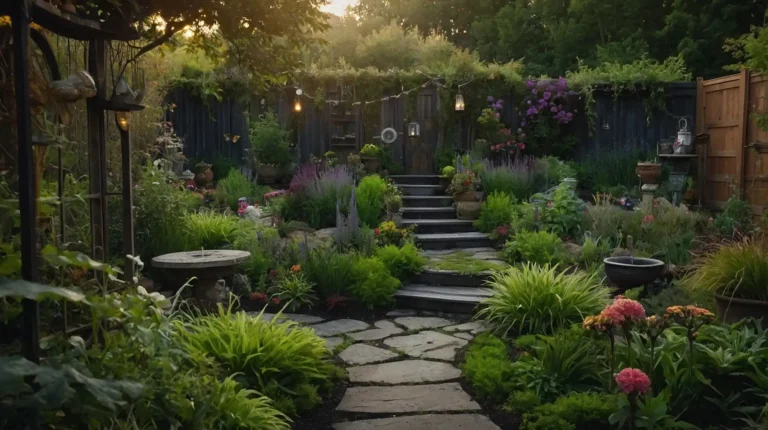Syngonium Care Essentials: Thrive with Top Tips!
Syngonium needs bright, indirect light and moderate watering. Keep the soil moist, but avoid waterlogging.
Syngonium is also known as arrowhead. Syngonium is a popular houseplant due to its attractive foliage and easy-care nature and is commonly found in Central and South America rainforests.
Native to tropical rainforests, it thrives in bright, indirect light but can tolerate low-light conditions. Water the plant moderately, ensuring the soil remains moist but not soggy.
Overwatering can lead to root rot, so letting the top inch of soil dry out between waterings is crucial.
This plant enjoys high humidity and warmer temperatures, making it ideal for indoor environments. Occasional misting can help maintain humidity levels.
Regular pruning encourages bushier growth and removes any leggy stems. Syngonium is also known for its air-purifying qualities, making it a great addition to any home.

Types Of Syngonium
Syngonium, also known as Arrowhead Plants, is popular for its beautiful foliage and easy care. They thrive in indoor environments and come in various types with unique characteristics.
Understanding the different types of Syngonium can help you choose the perfect one for your home.
You can also read: Monstera Leaves Browning: Revive Your Plant Now!
Varieties Of Syngonium
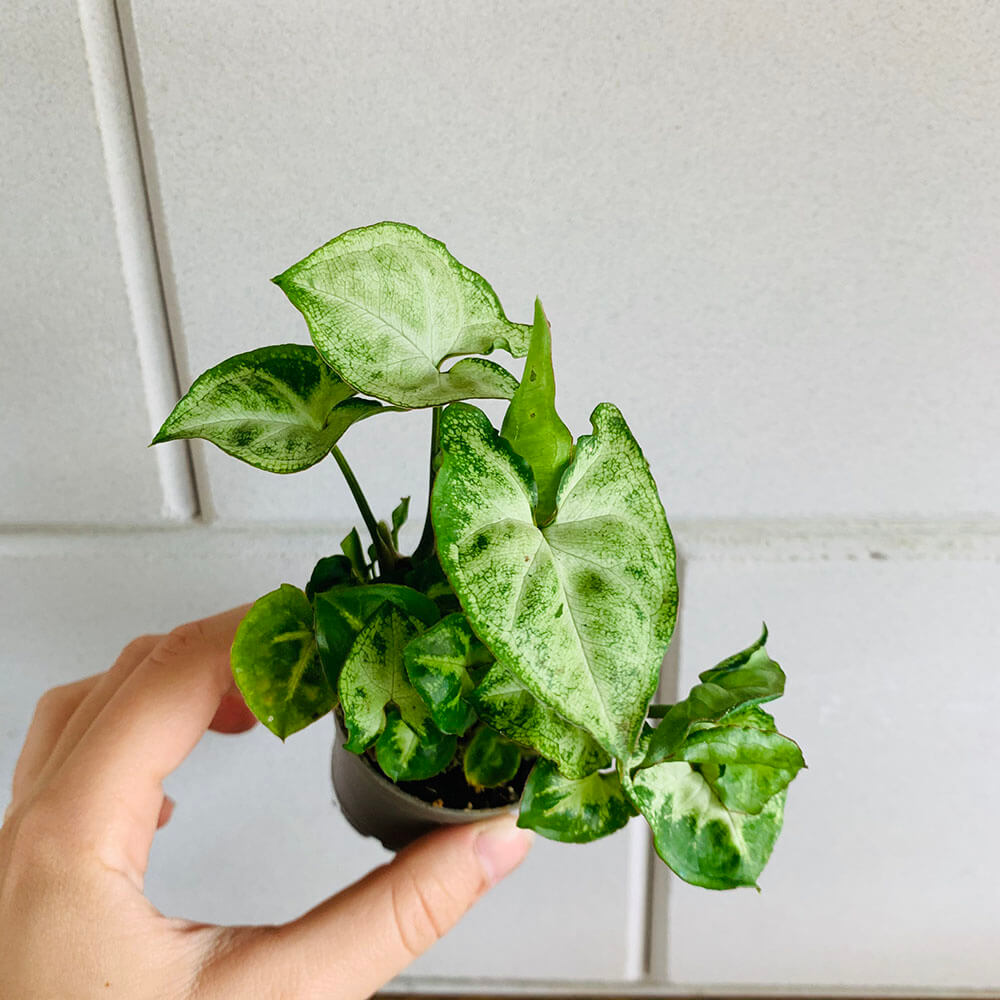
There are many varieties of Syngonium that plant enthusiasts love. Each variety has its own charm and beauty.
Here are some popular ones:
- Syngonium podophyllum: This is the most common variety. It has green leaves with white or silver markings.
- Syngonium ‘Neon Robusta’: Known for its pinkish leaves, this variety adds a splash of color to any room.
- Syngonium ‘White Butterfly’: Features creamy white leaves with green edges, resembling a butterfly.
- Syngonium ‘Pixie’: A dwarf variety perfect for small spaces. It has dark green leaves with light green veins.
- Syngonium ‘Maria Allusion’: This variety has bronze-green leaves with hints of pink and red.
Let’s look at a quick comparison of these varieties:
| Variety | Leaf Color | Special Features |
|---|---|---|
| Syngonium podophyllum | Green with white/silver | Common, easy to grow |
| Syngonium ‘Neon Robusta’ | Pink | Bright, colorful foliage |
| Syngonium ‘White Butterfly’ | White with green edges | Butterfly-like appearance |
| Syngonium ‘Pixie’ | Dark green with light veins | Dwarf size, compact |
| Syngonium ‘Maria Allusion’ | Bronze-green with pink/red | Unique color blend |
Different Leaf Shapes
Syngonium plants are known for their unique leaf shapes. These shapes change as the plant matures.
Here are some common leaf shapes:
- Arrowhead Shape: Young Syngonium leaves are typically arrowhead-shaped. This is why they are called Arrowhead Plants.
- Lobed Shape: As the plant matures, the leaves develop lobes. They can have 3-5 lobes.
- Heart Shape: Some varieties have heart-shaped leaves. These are often seen in the juvenile phase.
Here’s a breakdown of how leaf shapes change with growth:
| Growth Stage | Leaf Shape | Description |
|---|---|---|
| Juvenile | Arrowhead | Simple, arrow-like leaves |
| Mature | Lobed | Complex, multi-lobed leaves |
| Mixed | Heart | Combination of shapes |
Understanding these leaf shapes can help you identify the growth stage of your Syngonium. It also adds to the plant’s aesthetic appeal, making it a favorite among indoor plant lovers.
Also Recommend To Read: 6 Stunning Indoor Fern Types To Beautify Your Home!
Ideal Growing Conditions
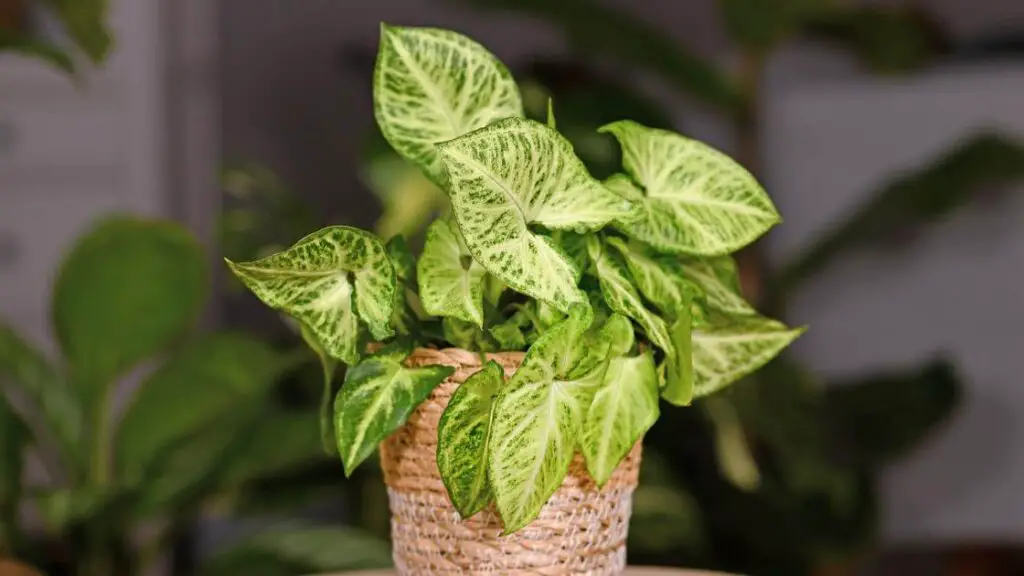
Syngoniums are beautiful, low-maintenance plants perfect for any home. To keep them thriving, it’s crucial to provide ideal growing conditions.
This means ensuring they have the right light, temperature, and humidity. Let’s explore the best conditions for your Syngonium.
Light Requirements
Syngoniums prefer bright, indirect light. Direct sunlight can scorch their leaves, so avoid placing them in direct sun.
You can place them near a window with filtered light or use sheer curtains to diffuse the sunlight.
Here are some tips for optimal light:
- Avoid direct sunlight to prevent leaf burn.
- Filtered light is perfect for these plants.
- Rotate the plant regularly for even growth.
You might notice leggy growth or pale leaves if your Syngonium isn’t getting enough light. In such cases, you can use artificial grow lights.
Position the light about 12 inches above the plant and run it for 12-14 hours daily.
| Light Condition | Effect on Plant |
|---|---|
| Bright, Indirect Light | Healthy Growth |
| Direct Sunlight | Scorched Leaves |
| Low Light | Leggy, Pale Leaves |
Temperature And Humidity Needs
Syngoniums thrive in warm, humid environments.
They prefer temperatures between 60-85°F. Avoid exposing them to temperatures below 50°F, as this can cause damage.
Here are some tips for maintaining the right temperature:
- Keep away from drafts and sudden temperature changes.
- Avoid placing near air conditioning vents or heaters.
Humidity is also crucial for Syngoniums. They prefer high humidity levels. If your home is dry, you can increase humidity by:
- Using a humidifier near the plant.
- Placing a tray of water with pebbles under the plant.
- Grouping plants together to create a humid microenvironment.
Signs of low humidity include brown leaf tips and wilting. Ensuring the right temperature and humidity, your Syngonium will flourish and stay healthy.
| Temperature Range | Effect on Plant |
|---|---|
| 60-85°F | Optimal Growth |
| Below 50°F | Damage to Plant |
Watering And Feeding
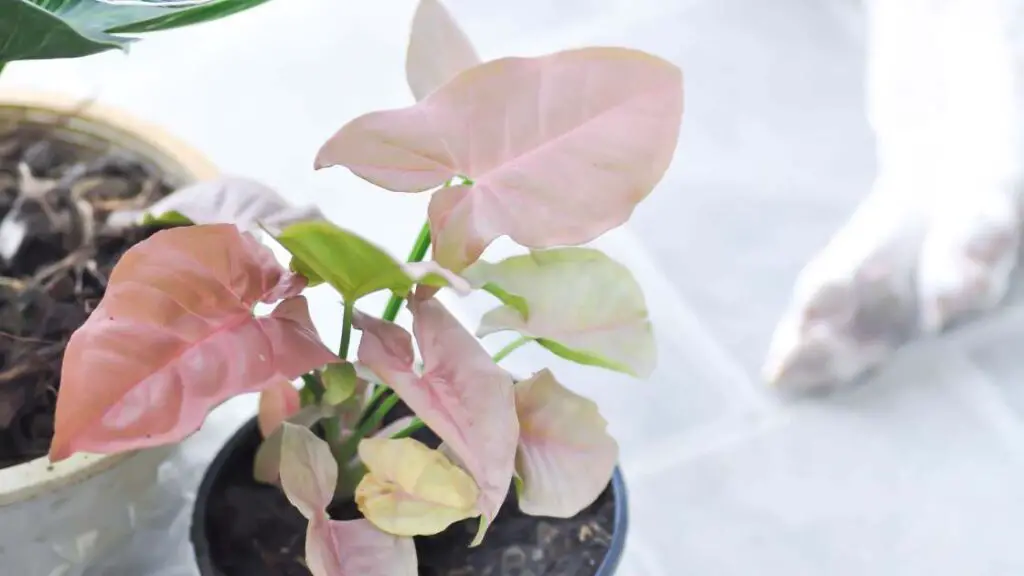
Syngoniums, or arrowhead plants, are popular houseplants due to their vibrant foliage and easy care. Proper watering and feeding are crucial to keep your Syngonium healthy and thriving.
This section will cover essential tips on watering frequency and fertilizing your Syngonium.
Watering Frequency
Watering your Syngonium correctly is essential for its growth. Overwatering or underwatering can harm the plant.
Follow these guidelines to ensure your plant stays hydrated:
- Check soil moisture: Before watering, check the top inch of soil. If it’s dry, it’s time to water.
- Water amount: Water until excess drains from the bottom. This ensures the roots are adequately hydrated.
- Frequency: Water your Syngonium once weekly during the growing season (spring and summer). In fall and winter, reduce to every 10-14 days.
Humidity levels also affect your Syngonium’s watering needs. Higher humidity means less frequent watering.
Consider these tips to maintain proper humidity:
- Use a humidity tray.
- Mist the leaves regularly.
- Place a humidifier nearby.
| Season | Watering Frequency |
|---|---|
| Spring/Summer | Once a week |
| Fall/Winter | Every 10-14 days |
Always use room temperature water to avoid shocking the plant. Cold water can cause root damage, while hot water can scald the roots.
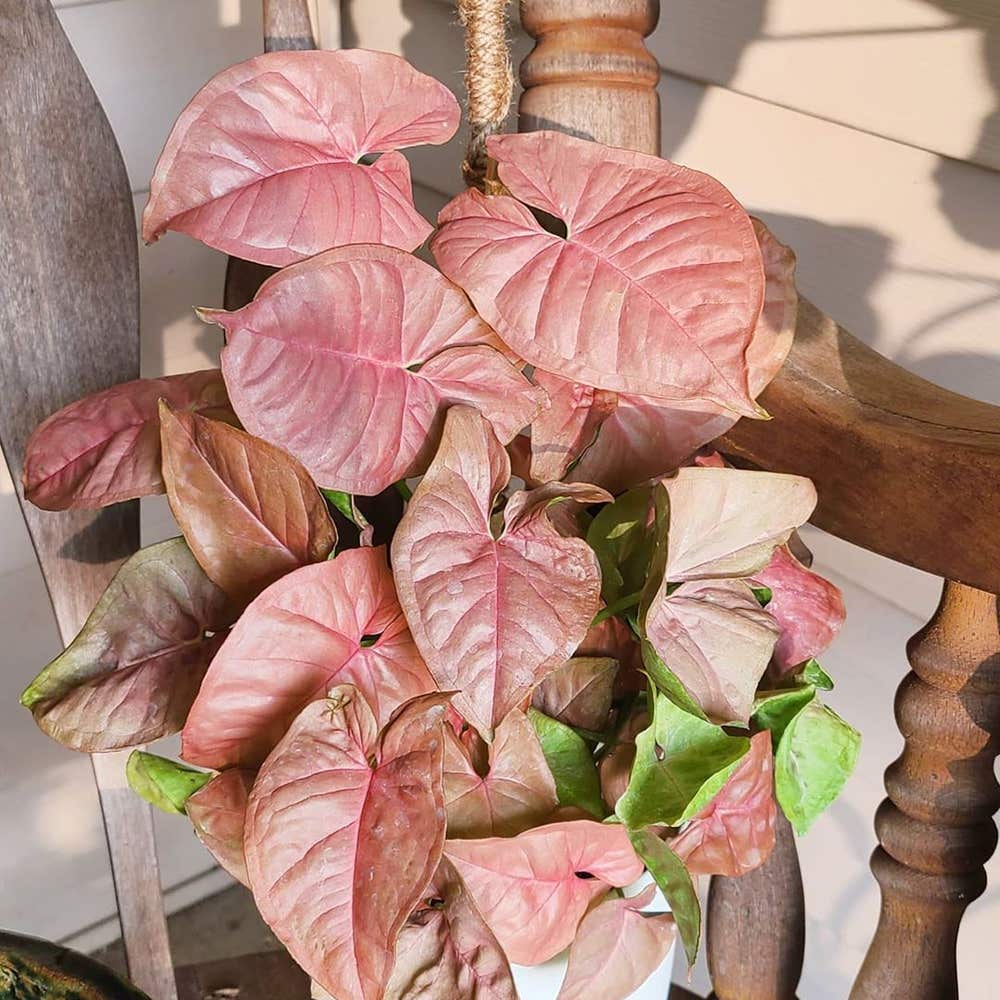
You can also read this article to learn about the top 5 fast growing shade plants.
Fertilizing Tips
Fertilizing your Syngonium provides essential nutrients for its growth. Here are some key tips:
- Type of fertilizer: Use a balanced, water-soluble fertilizer with an N-P-K ratio of 20-20-20.
- Frequency: Fertilize monthly during the growing season (spring and summer). Skip feeding in fall and winter as the plant growth slows down.
- Application: Dilute the fertilizer to half the recommended strength to avoid over-fertilizing.
Over-fertilizing can burn the roots and damage the plant. Always follow the recommended dosage and frequency.
Signs of over-fertilization include:
- Yellowing leaves
- Leaf burn
- Stunted growth
If you notice these signs, flush the soil with water to remove excess fertilizer.
Consider these organic alternatives for a natural approach:
- Compost tea
- Fish emulsion
- Worm castings
These organic fertilizers provide nutrients without the risk of chemical burns. They also improve soil health and promote better growth.
Pruning And Training
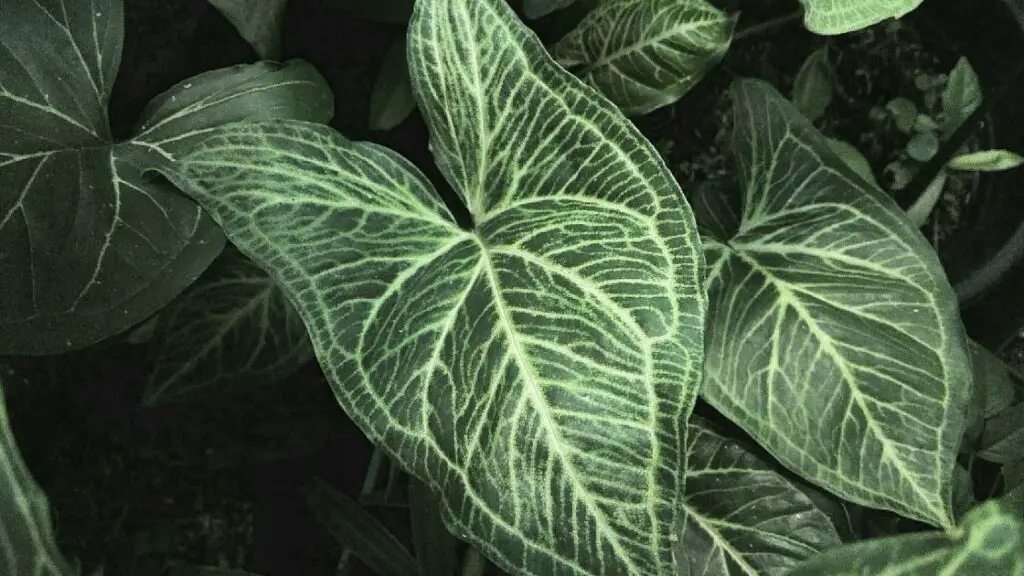
Syngonium plants, or arrowhead plants, are popular indoor plants due to their attractive foliage and ease of care.
Pruning and training are essential for maintaining their shape and encouraging healthy growth. Proper techniques help these plants flourish and add beauty to any space.
Encouraging Bushier Growth
Regular pruning is key to achieving a fuller, bushier Syngonium. Pruning encourages new shoots to develop, making the plant look denser and more vibrant.
Here are some tips for effective pruning:
- Use clean, sharp scissors: Always use clean and sharp scissors to prevent infection and ensure a clean cut.
- Prune regularly: Trim the stems by a few inches every few months to promote new growth.
- Focus on leggy stems: Remove long ones to encourage the plant to grow more compactly.
- Pinch back new growth: Pinching the tips of new growth can stimulate branching and result in a bushier plant.
Here’s a simple table to summarize the pruning tips:
| Tip | Description |
|---|---|
| Use clean, sharp scissors | Prevents infection and ensures clean cuts. |
| Prune regularly | Encourages new growth and maintains shape. |
| Focus on leggy stems | Removes long stems to promote compact growth. |
| Pinch back new growth | Stimulates branching and bushier appearance. |
Training For Climbing
Syngonium plants are natural climbers and benefit from being trained to climb. This can be done using various supports and techniques. Here are steps to train your Syngonium for climbing:
- Select support: Choose a moss pole, trellis, or bamboo stake as a support structure.
- Place the support: Insert the support into the pot, ensuring it is stable and secure.
- Attach the stems: Use plant ties or soft string to tie the stems to the support gently. Avoid tying too tightly.
- Guide the growth: As the plant grows, continue to tie new stems to the support, guiding them upwards.
- Prune as needed: Prune any wayward stems to maintain the desired shape and direction.
Training Syngonium for climbing enhances its beauty and effectively utilizes vertical space.
This method is perfect for small apartments or homes where space is limited. Your Syngonium can become a stunning focal point in any room with proper training.
Common Pests And Diseases
Syngonium or arrowhead plants are popular for their beautiful foliage and easy care. Yet, like all plants, they face threats from pests and diseases.
Knowing the common issues and how to tackle them ensures your Syngonium stays healthy and vibrant.
Identifying Pest Infestations
Identifying pest infestations early is crucial. Common pests affecting Syngonium plants include spider mites, aphids, and mealybugs.
Each pest presents unique symptoms.
- Spider Mites: These tiny pests cause yellowing leaves and fine underside webbing.
- Aphids: These small, soft-bodied insects cluster on new growth, causing deformation and sticky residue.
- Mealybugs: These pests appear as white, cotton-like masses on leaves and stems.
To further help, here’s a table summarizing the signs of pest infestations:
| Pest | Signs |
|---|---|
| Spider Mites | Yellowing leaves, fine webbing |
| Aphids | Deformed growth, sticky residue |
| Mealybugs | White, cotton-like masses |
Regularly inspect your plants, especially the undersides of leaves. Early detection makes treatment easier and more effective.
Preventive Measures And Treatments
Implementing preventive measures and treatments protects your Syngonium from pests. Start with proper care practices:
- Maintain good air circulation.
- Water only when the topsoil is dry.
- Clean leaves regularly to remove dust.
If pests appear, use these treatments:
- Spider Mites: Spray with a mixture of water and neem oil. Increase humidity around the plant.
- Aphids: Use insecticidal soap or a mixture of water and dish soap. Rinse the plant thoroughly.
- Mealybugs: Dab affected areas with rubbing alcohol using a cotton swab. Repeat weekly until pests are gone.
For serious infestations, consider using a systemic insecticide. Always follow the product instructions and ensure safe use around pets and children.
Regular monitoring and prompt action keep your Syngonium healthy and pest-free.
Propagation Methods
Syngonium plants, often arrowhead vines, are popular houseplants due to their beautiful leaves and easy care. One of the most fascinating aspects of Syngonium care is its propagation.
There are two primary methods for propagating Syngonium: from cuttings and seeds. Each method has its unique steps and benefits.
Propagation From Cuttings
Propagating Syngonium from cuttings is a straightforward and effective method. Follow these steps to ensure success:
- Select a healthy stem with at least one node. The node is the part where leaves and roots grow.
- Cut the stem below the node using clean, sharp scissors. The cutting should be 4-6 inches long.
- Remove the lower leaves to expose the node.
- Place the cutting in water or directly in the soil. If using water, ensure that the node is submerged.
- Wait for roots to develop, which usually takes 2-4 weeks. Change the water regularly if you use the water method.
- Transfer the rooted cutting to a pot with well-draining soil.
Here’s a simple table to summarize the key steps:
| Step | Description |
|---|---|
| Select Stem | Choose a healthy stem with a node |
| Make Cut | Cut below the node, 4-6 inches long |
| Prepare Cutting | Remove lower leaves, expose node |
| Rooting | Place in water or soil |
| Wait | Wait for roots to develop |
| Transplant | Move to pot with soil |
Growing From Seeds
Growing Syngonium from seeds is less common but can be a rewarding process. Follow these steps for successful germination:
- Obtain fresh seeds from a reputable source. Syngonium seeds must be fresh to germinate effectively.
- Soak the seeds in water for 24 hours. This helps to soften the seed coat.
- Prepare a seed tray with a mix of peat and perlite. This provides a well-draining environment.
- Plant the seeds about 1/4 inch deep into the soil mix.
- Water the soil lightly to keep it moist but not soggy.
- Cover the tray with plastic wrap or a dome to maintain humidity.
- Place the tray in a warm location with indirect sunlight.
- Check for germination in about 2-3 weeks. Keep the soil moist during this period.
Here’s a quick checklist to help you remember the steps:
- Obtain fresh seeds
- Soak seeds for 24 hours
- Prepare seed tray
- Plant seeds 1/4 inch deep
- Keep soil moist
- Cover with plastic wrap
- Warm location with indirect sunlight
- Check for germination in 2-3 weeks
Creative Uses Of Syngonium
Syngonium, known as the arrowhead plant, is a popular houseplant due to its attractive foliage and easy care.
Besides its aesthetic appeal, Syngonium offers various creative uses in home decor.
Explore incorporating this versatile plant into your living spaces, enhancing beauty and functionality.
Incorporating Syngonium In Terrariums
Syngonium thrives in terrariums due to its compact size and humidity-loving nature. A terrarium is a small, enclosed environment perfect for these plants.
This setup mimics their natural habitat, promoting lush growth.
Here are some tips for using Syngonium in terrariums:
- Choose a glass container: Clear glass containers work best as they allow light to reach the plant.
- Layering: Create layers with pebbles, activated charcoal, and potting soil to ensure proper drainage.
- Humidity: Maintain high humidity levels by regularly misting the terrarium partially closed.
- Light: Place the terrarium in bright, indirect light to keep the Syngonium healthy.
- Pruning: Trim the plant to prevent overgrowth and maintain its shape.
By following these tips, you can create a stunning mini-ecosystem that showcases the vibrant foliage of Syngonium.
The plant’s varied leaf colors and patterns add visual interest, making it a focal point in your terrarium.
Syngonium In Vertical Gardens
Syngonium is ideal for vertical gardens due to its climbing nature.
These gardens save space and bring greenery to urban living environments. Vertical gardens can be installed indoors or outdoors, depending on your preference.
Steps to incorporate Syngonium in vertical gardens:
- Select a vertical structure: Choose a sturdy frame or wall-mounted planter for your garden.
- Plant placement: Position Syngonium at the bottom or middle levels to allow it to climb upwards.
- Soil and watering: Use well-draining soil and ensure consistent watering to keep the plants hydrated.
- Support: Provide trellises or wire mesh for the Syngonium to climb.
- Light and temperature: Ensure the garden receives bright, indirect light and maintains a stable temperature.
In a vertical garden, Syngonium adds greenery and purifies the air. Its lush, arrow-shaped leaves create a beautiful cascading effect.
The plant’s adaptability and low maintenance make it a perfect choice for modern living spaces.
Frequently Asked Questions
How Often Should I Water Syngonium?
Water Syngonium when the top inch of soil is dry. Overwatering can lead to root rot. Ensure the pot has good drainage. Adjust the watering frequency based on the season.
What Type Of Light Does Syngonium Need?
Syngonium thrives in bright, indirect light. Direct sunlight can scorch its leaves. Low light conditions can slow its growth. Adjust light exposure to maintain vibrant leaves.
How Do I Propagate Syngonium?
Propagate Syngonium using stem cuttings. Cut below a node and place it in water or soil. Ensure it has a few leaves. Roots will develop in a few weeks.
Can Syngonium Grow In Low Light?
Syngonium can tolerate low light but prefers bright, indirect light. Low light can cause slower growth and duller leaves. Rotate the plant occasionally for even light exposure.
Conclusion
Syngonium plants are easy to care for and perfect for beginners. Just remember to provide indirect light and regular watering.
Your Syngonium will thrive and add beauty to any space with proper attention. Enjoy the lush greenery and benefits these lovely plants bring to your home.
Happy gardening!

